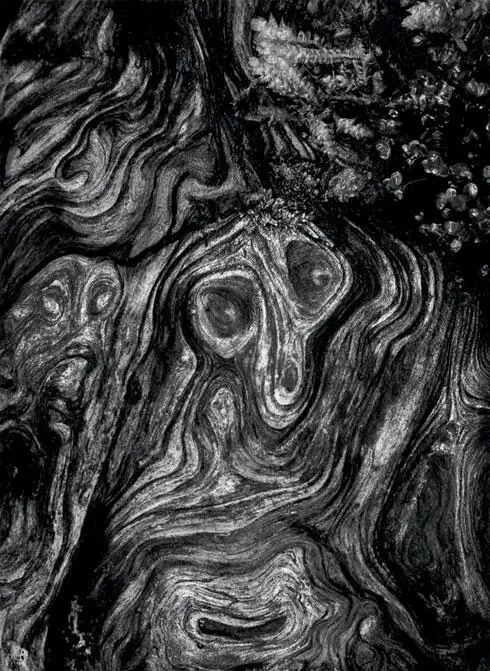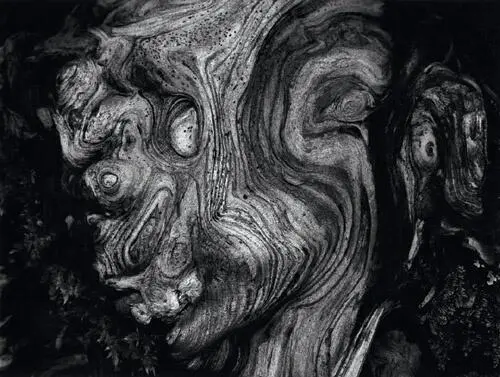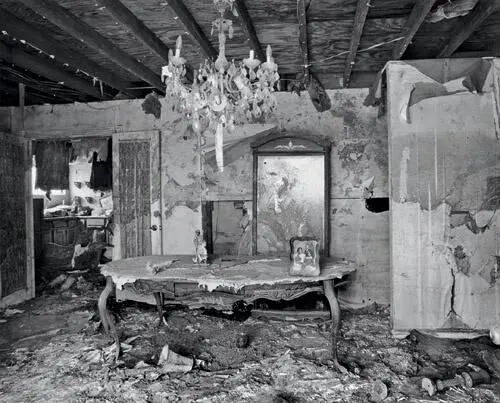Bruce Barnbaum - The Art of Photography - An Approach to Personal Expression
Здесь есть возможность читать онлайн «Bruce Barnbaum - The Art of Photography - An Approach to Personal Expression» весь текст электронной книги совершенно бесплатно (целиком полную версию без сокращений). В некоторых случаях можно слушать аудио, скачать через торрент в формате fb2 и присутствует краткое содержание. Жанр: Старинная литература, на английском языке. Описание произведения, (предисловие) а так же отзывы посетителей доступны на портале библиотеки ЛибКат.
- Название:The Art of Photography: An Approach to Personal Expression
- Автор:
- Жанр:
- Год:неизвестен
- ISBN:нет данных
- Рейтинг книги:5 / 5. Голосов: 1
-
Избранное:Добавить в избранное
- Отзывы:
-
Ваша оценка:
- 100
- 1
- 2
- 3
- 4
- 5
The Art of Photography: An Approach to Personal Expression: краткое содержание, описание и аннотация
Предлагаем к чтению аннотацию, описание, краткое содержание или предисловие (зависит от того, что написал сам автор книги «The Art of Photography: An Approach to Personal Expression»). Если вы не нашли необходимую информацию о книге — напишите в комментариях, мы постараемся отыскать её.
The Art of Photography: An Approach to Personal Expression — читать онлайн бесплатно полную книгу (весь текст) целиком
Ниже представлен текст книги, разбитый по страницам. Система сохранения места последней прочитанной страницы, позволяет с удобством читать онлайн бесплатно книгу «The Art of Photography: An Approach to Personal Expression», без необходимости каждый раз заново искать на чём Вы остановились. Поставьте закладку, и сможете в любой момент перейти на страницу, на которой закончили чтение.
Интервал:
Закладка:
Expanding and Defining Your Interests
In Chapter 1, I devoted a substantial section to determining your interests. I’d like to return to that from a different viewpoint, and perhaps one that goes further. I’ve long felt that most people segregate their lives, putting their work in one place, photography in another, music in a third, other outside interests in a fourth, etc. I think that by integrating your life to a greater extent you can draw from multiple areas and apply the lessons to each of the others. The nonvisual arts provide perfect starting points for this integrated approach. We are all multifaceted people with a variety of interests, from politics to the arts, from financial investments to recreational pleasures. No doubt some of these interests have greater potential for a visual dialogue than others, but many have potential beyond our expectations.
In our lives, we almost have to segregate these varied interests; but in so-called primitive societies, they intermingle as one. Art, music, religion, food gathering, birth, marriage, and death are all intertwined. Each represents an essential part of life, and none can exist without support from the others. Why we have evolved into a civilization that segregates these aspects of life could be a lifelong study for an anthropologist. But I feel that those of us who are seriously interested in making photographs can benefit greatly by trying to integrate the many facets of our own lives.

This image is one of a series I made in response to a major environmental battle I led—and lost—during the 1990s. Our environmental group won every legal battle against a proposed gravel pit and hard rock quarry, but county politicians altered existing laws and ignored others to grant the permit. The photographs I produced are my “primal scream” .
Figure 18-2. Ghosts and Masks
What are your interests? Do you find any visual qualities in them, whether or not you see them as photographic qualities? If so, there may be ways to make comments on them with your camera. My outside interests—natural history, the cosmos and the subatomic, architecture—found photographic expression, and I feel that you can have the same gratifying experiences if you pursue your interests actively.
I wonder how many people try to find things that can be photographed where they work—where they spend nearly half of their waking hours. How many people look for photographic subjects around the house or in their neighborhood? How many people probe their general interests—or their everyday environment—for photographic possibilities?
The canyons were special to me, as were the cathedrals, which I discovered almost simultaneously. Prior to that, the natural landscape served as my major source of imagery, and it still forms the central focus of my photography. Each of these areas—as well as my work in urban areas—has opened up new avenues for me that have great importance and meaning.
Nature draws me because I love the beauty and drama of our planet, and I abhor the way we are defiling it. Yet, it has always been difficult for me to photograph the destruction. I don’t like spending hours in the darkroom just to make a print that looks awful! I always wanted to make some visual commentary on humanity’s disregard for the land, but it remained beyond my grasp until rampant development around my home in Agoura, California (from 1980–1982) pushed me over the brink. Then, for the first time, I became so angry that I photographed things I hated: rolling hills once covered with oaks and wild grasses, now bulldozed into bare terraces and plateaus; homes that looked like they came out of your old Monopoly set plunked down in rows with concrete block walls surrounding each one like miniature prisons; telephone and power wires hanging in the sky. Even those photographs are meaningful to me, but I don’t like them. I don’t like what they represent.

This image in my “Darkness and Despair” portfolio is meant to show the turbulence, horrors, and distortions caused by the illegal political decision to permit the gravel pit and hard rock quarry. The affair proved to me that when big money is involved, there’s no difference between democracy and dictatorship. The entire portfolio derives from close-up images of burls on one small log I found on my property, none more than four inches long .
Figure 18-3. Distortion and Desperation
In 1999, I went a step further. After an extended environmental battle that I headed, political interests overturned, rewrote, or ignored existing laws that would have protected the environment from a massive gravel pit and quarry. The permitting of this illegal project drove me to make a series of photographs that were not of the project itself, but rather designed to convey my anger, anguish, and torment over the way politicians crushed both the public and the environment with their outrageous decisions.
These photographs are details of burls on a small log I found on my own property in the state of Washington. Though they are all made under soft light conditions, they are printed with exaggerated contrast levels—including deep blacks devoid of detail and light grays glowing out from the blacks. There are few bright whites because I wanted to avoid tonalities that might be interpreted as optimistic or positive (Figure 18-2 and Figure 18-3).
I presented 10 of these images as my “Darkness and Despair” portfolio in Tone Poems – Book 1 . They are far more artistic than the series I did in Agoura and elicit a far greater emotional response from viewers. They are quite abstract—some viewers can’t determine the subject matter—but the universal visual language of sharp contrasts and tightly curved lines expresses my ideas and feelings. Hence, these photographs use a small log for a specific purpose. In essence, I followed Minor White’s dictum of photographing the log for what else it represented.

The family photograph on the dining room table, likely placed there after the flooding subsided, had a strong emotional effect on me. It was as if the family had come alive before my eyes, seen in happier days. I never walked into the house and never touched a thing. The image shows exactly what I saw from the doorway .
Figure 18-4. Destroyed Home, Ninth Ward, New Orleans
After Hurricane Katrina ravaged New Orleans and the Gulf Coast of Mississippi, I quickly did a scouting trip for a workshop. The workshop followed several months later. The purpose was to photograph the awful devastation caused by a natural event after years of indefensible human neglect (Figure 18-4 and Figure 18-5). It was gut wrenching to see such widespread devastation, and to see that so little changed in the seven months between the scouting trip and the workshop. I hope that these images made an impact, but it appears that government has not been terribly interested in rebuilding New Orleans or the lives of the people who once lived there.
Neither my Katrina images nor my “Darkness and Despair” images represent my “typical” approach, but they had to be done! I simply couldn’t avoid doing them. Give some thought to what you want to say—with pleasure, awe, sadness, or anger—and how you can say it. Note the things you do aside from photography and see whether any of them have photographic possibilities. Note the things you think about and see whether any of them have visual aspects. Perhaps you can find material objects that relate to those visions. These are the areas where you’ll find your strongest images.
Читать дальшеИнтервал:
Закладка:
Похожие книги на «The Art of Photography: An Approach to Personal Expression»
Представляем Вашему вниманию похожие книги на «The Art of Photography: An Approach to Personal Expression» списком для выбора. Мы отобрали схожую по названию и смыслу литературу в надежде предоставить читателям больше вариантов отыскать новые, интересные, ещё непрочитанные произведения.
Обсуждение, отзывы о книге «The Art of Photography: An Approach to Personal Expression» и просто собственные мнения читателей. Оставьте ваши комментарии, напишите, что Вы думаете о произведении, его смысле или главных героях. Укажите что конкретно понравилось, а что нет, и почему Вы так считаете.












